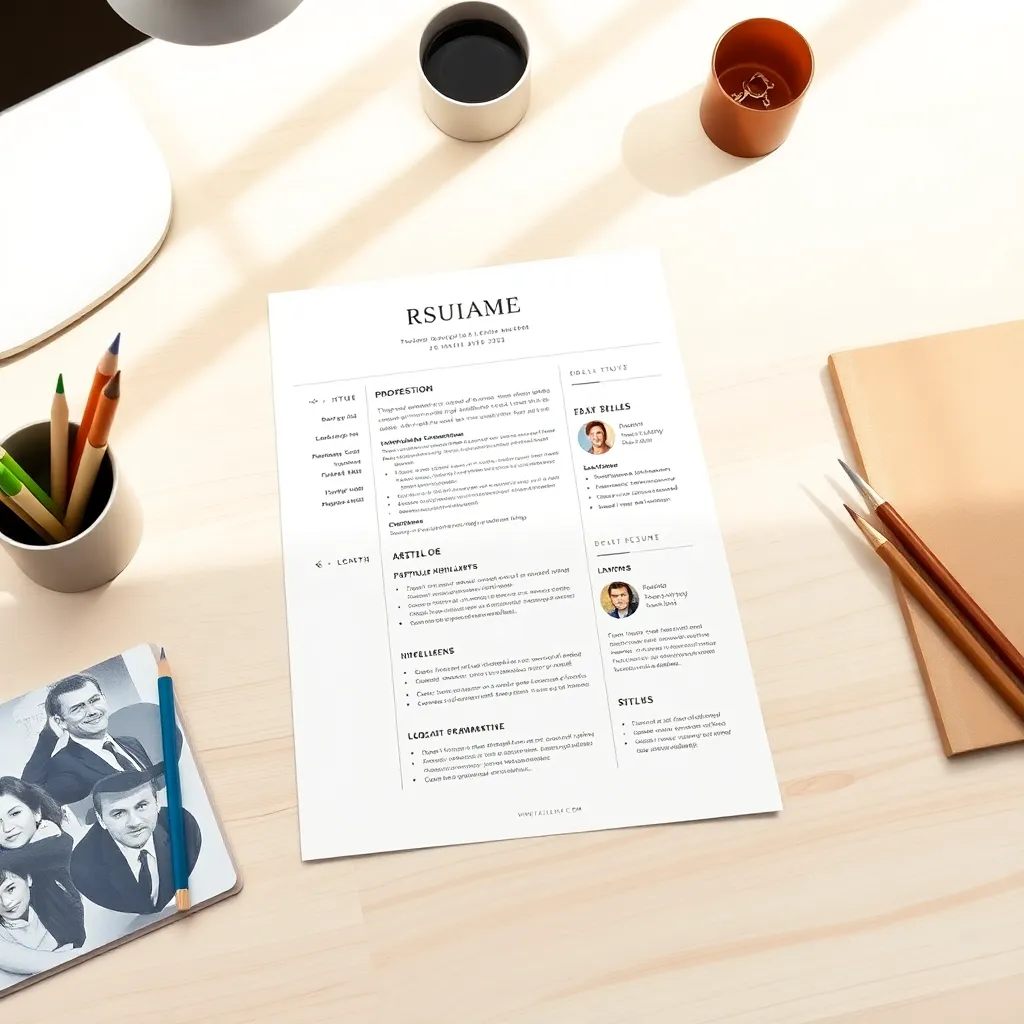In today’s competitive job market, mastering the interview process is essential for career success. Whether you’re a recent graduate, changing careers, or aiming for a promotion, your interview performance often determines whether you land your dream job. This comprehensive guide will equip you with proven strategies to excel in any interview format, navigate challenging questions, and leave a lasting impression on potential employers.
Understanding Modern Interview Dynamics
The interview landscape has evolved significantly in recent years. Modern interviews blend competency assessments with cultural fit evaluations, moving beyond simply verifying resume details. According to recent research, 78% of hiring managers now use behavioral questions to gauge adaptability, making it crucial to understand what’s happening beneath the surface of these conversations.
Current Interview Trends by Industry
Different industries approach interviews with distinct priorities:
- Technology: Expect technical assessments, coding challenges, and questions about your problem-solving process. Companies like Google and Amazon often use structured behavioral interviews alongside technical evaluations.
- Healthcare: Scenario-based questions focusing on patient care, ethics, and teamwork in high-pressure situations are common.
- Finance: Case studies, analytical assessments, and questions testing commercial awareness dominate these interviews.
- Retail and Hospitality: Customer service scenarios and conflict resolution questions are priorities.
Startups tend to emphasize cultural fit and adaptability, while established corporations may focus more on specific technical competencies and experience. The rise of remote work has also introduced new dimensions to the interview process, with employers increasingly evaluating self-management skills and digital communication abilities.
What Interviewers Are Actually Evaluating
Beyond your answers, interviewers are assessing:
- Problem-solving agility: How you approach challenges and implement solutions
- Cultural alignment: Whether your values match the organization’s mission
- Collaboration potential: Your ability to work effectively with diverse teams
- Learning capacity: How quickly you can adapt to new information and skills
- Communication style: Your ability to articulate complex ideas clearly
Interviewers also pay close attention to non-verbal cues like eye contact, posture, and listening skills. Studies show that balancing self-promotion with humility significantly impacts interviewer perception, especially in English-speaking markets where direct communication is valued but perceived arrogance can be detrimental.
Comprehensive Pre-Interview Preparation
Thorough preparation is your foundation for interview success. This involves much more than rehearsing answers—it’s about developing a strategic approach tailored to each opportunity.
Research Strategies
Conduct deep research on:
- Company background: Review the company’s website, annual reports, and mission statement
- Recent developments: Check news articles, press releases, and LinkedIn Company Pages for insights into current priorities
- Industry standing: Understand market position, competitors, and challenges
- Company culture: Explore social media, employee reviews, and corporate values
- Interviewer profiles: Research your interviewers on professional networks if their names are provided
This research allows you to customize your responses and demonstrate genuine interest in the organization. For example, referencing a recent company achievement or initiative shows you’re invested in their success.
Creating Your Interview Strategy
Develop a personalized strategy by:
- Mapping your experience to job requirements: Create a document aligning your skills with each requirement in the job description
- Preparing specific examples: Use the STAR method (Situation, Task, Action, Result) to structure concrete examples of your achievements
- Identifying your unique value proposition: Determine what distinguishes you from other candidates with similar qualifications
- Rehearsing your professional narrative: Craft a compelling story about your career journey that explains transitions and highlights growth
For technical roles, prepare for industry-specific assessments like budget analysis or coding challenges.
The Day Before: Final Preparation Checklist
- Confirm interview details (time, location, format, participants)
- Test technology if it’s a virtual interview
- Prepare appropriate attire that matches the company culture
- Print extra copies of your resume and portfolio materials
- Plan your route or virtual setup
- Prepare thoughtful questions for interviewers
- Practice relaxation techniques to manage anxiety
- Get adequate rest and nutrition
For virtual interviews, set up proper lighting, ensure a professional background, and test your camera and microphone. For in-person interviews, plan to arrive 10-15 minutes early to account for unexpected delays.
Mastering Common Interview Questions
Certain questions appear consistently across industries and positions. Preparing strong, authentic responses to these common inquiries provides a solid foundation for interview success.
“Tell Me About Yourself”
This seemingly simple opener is actually a strategic opportunity. Structure your response as a concise professional narrative:
- Begin with your current role and key responsibilities
- Highlight 2-3 significant achievements or skills relevant to the position
- Briefly mention educational background if relevant
- Connect your experience to why you’re interested in this specific role
- Keep it under two minutes and focused on professional attributes
Example: “I’m currently a digital marketing specialist at ABC Company, where I lead email marketing campaigns that have increased conversion rates by 28% over the past year. I’ve developed expertise in data analytics and content optimization, which stemmed from my degree in Marketing Communications. I’m particularly interested in this role because it would allow me to apply these skills to help scale your e-commerce division, which I understand is a key growth priority for your company.”
Behavioral Question Strategies
Behavioral questions assess how you’ve handled situations in the past as an indicator of future performance. The STAR framework provides an effective structure:
- Situation: Briefly describe the context
- Task: Explain your responsibility in that situation
- Action: Detail the specific steps you took
- Result: Share the outcomes, preferably with quantifiable results
Example for “Describe a conflict resolution success”:
“In my previous role as team lead, two developers had different approaches to a critical project, causing tension and delays. My task was to resolve the conflict without compromising the timeline. I arranged individual meetings to understand each perspective, followed by a facilitated discussion where I had them focus on shared goals rather than methodological differences. As a result, they developed a hybrid approach that incorporated both viewpoints, and we delivered the project two days ahead of schedule with all requirements met.”
Technical and Role-Specific Questions
For technical roles, prepare for questions like “Explain cloud deployment pipelines” for IT positions. Practice explaining complex concepts clearly and concisely, focusing on both theoretical understanding and practical application. If asked about technologies you’re less familiar with, acknowledge the limitation while demonstrating your learning approach: “While I haven’t worked extensively with that specific tool, I have experience with similar systems and would approach learning it by…”
Addressing Strengths and Weaknesses
When discussing strengths, choose attributes relevant to the role and support them with evidence. For weaknesses, select genuine areas for growth that aren’t central to the position, and emphasize your improvement strategies.
Strength example: “My analytical approach to problem-solving has been particularly valuable in optimizing marketing campaigns. For instance, I implemented A/B testing that increased our email open rates by 35% by identifying the most effective subject line formats.”
Weakness example: “I’ve sometimes found it challenging to delegate tasks, preferring to ensure quality by handling things myself. I’ve addressed this by implementing structured delegation processes and focusing on clear communication of expectations, which has improved my team’s productivity by 20% while maintaining quality standards.”
Psychological Aspects of Interview Success
Understanding the psychological dynamics of interviews can give you a significant advantage in how you present yourself and connect with interviewers.
The Psychology of First Impressions
Research shows that interviewers form initial impressions within the first 7-30 seconds of meeting you. These impressions can be difficult to change later, making your entrance and greeting crucial:
- Enter with confident but not aggressive body language
- Offer a firm handshake (when culturally appropriate and for in-person interviews)
- Make appropriate eye contact
- Express genuine appreciation for the interviewer’s time
- Match your energy level to the interviewer while remaining authentic
Small talk during the first few minutes serves an important purpose—it builds rapport and helps establish personal connection before diving into professional questions.
Confidence Without Arrogance
Studies show that overconfidence undermines trust during interviews. To project confidence without arrogance:
- Frame achievements in collaborative language: “I led a cross-functional team to reduce costs by 15%” rather than “I single-handedly fixed everything”
- Acknowledge contributions of others when discussing team successes
- Ask thoughtful questions that demonstrate your interest in learning
- Listen actively rather than waiting to speak
- Admit knowledge gaps honestly while expressing eagerness to learn
Managing Interview Anxiety
Interview anxiety is normal, but excessive stress can undermine your performance. Effective management techniques include:
- Preparation: Thorough knowledge reduces uncertainty and builds confidence
- Reframing: View the interview as a conversation rather than an interrogation
- Visualization: Mentally rehearse successful interview scenarios
- Controlled breathing: Practice box breathing (4-count inhale, hold, exhale, hold) to regulate your nervous system
- Power posing: Spend a few minutes before the interview in an expansive posture to increase confidence
Remember that mild nervousness can actually enhance performance by sharpening focus and demonstrating that you care about the opportunity.
Each interview format requires specific strategies to showcase your abilities effectively.
Excelling in Virtual Interviews
Virtual interviews have become standard practice for many organizations. To master this format:
- Technical preparation: Test your camera, microphone, and internet connection well in advance
- Environmental setup: Ensure proper lighting (facing you, not behind you), a neutral background, and freedom from distractions
- Visual engagement: Look at the camera (not the screen) to simulate eye contact
- Digital body language: Sit upright, nod occasionally to show understanding, and avoid excessive movement
- Contingency planning: Have a phone number to call if technical issues arise
Use the “Gallery View” in video conferencing platforms to maintain awareness of all participants in panel interviews. Keep essential documents accessible on your screen without creating distracting tab-switching.
Panel Interviews
When facing multiple interviewers simultaneously:
- Note each person’s name and role at the beginning
- Address each member by name and balance attention evenly
- Direct your initial response to the person who asked the question, then broaden your gaze to include others
- Track who has asked what to avoid repeating yourself if similar questions arise
- Be prepared for follow-up questions from different perspectives
Case Studies and Assessments
For consulting roles and analytical positions:
- Clarify the problem before beginning your analysis
- Think aloud to demonstrate your reasoning process
- Structure your approach using frameworks like SWOT or Porter’s Five Forces
- Consider multiple perspectives and alternatives
- Deliver a clear recommendation with supporting rationale
Succeeding in Multi-Stage Interview Processes
Many organizations use multiple interview rounds to evaluate candidates comprehensively:
- Track which aspects of your experience you’ve covered in each round
- Introduce new examples and accomplishments in later interviews
- Deepen your company research between rounds to ask increasingly insightful questions
- Build relationships with different stakeholders throughout the process
- Maintain consistent enthusiasm while adapting to the focus of each stage
Asking Intelligent Questions
The questions you ask reveal as much about you as the answers you provide. Thoughtful questions demonstrate research, strategic thinking, and genuine interest.
Questions About the Role and Expectations
Strong questions about the position include:
- “How does the team measure success for this role in the first 90 days?”
- “What are the biggest challenges someone in this position will face?”
- “How does this role contribute to the department’s and company’s objectives?”
- “Can you describe the typical workflow and collaboration patterns for this position?”
Questions About Company Culture and Future
To assess cultural fit and growth potential:
- “What’s the biggest challenge your department faces this quarter?”
- “How would you describe the company’s approach to professional development?”
- “What do you enjoy most about working here?”
- “How has the company’s mission evolved since you joined?”
Use insights from company earnings calls or annual reports to formulate questions that demonstrate commercial awareness: “I noticed in your recent sustainability report that you’re focusing on reducing carbon emissions. How might this role contribute to those environmental goals?”
Avoid questions about basic information readily available on the company website, as well as premature inquiries about salary, benefits, or time off in initial interviews.
Post-Interview Strategy
Your actions after the interview can significantly influence hiring decisions.
The Art of the Thank-You Note
Send a personalized thank-you email within 24 hours of your interview:
- Express genuine appreciation for the opportunity
- Reference specific conversation points to personalize your message
- Reiterate your interest and key qualifications
- Keep it concise (3-4 short paragraphs maximum)
- Proofread carefully before sending
Example:
“Dear Ms. Johnson,
Thank you for taking the time to discuss the Marketing Director position with me today. Our conversation about the challenges of entering the Asian market was particularly insightful, and it reinforced my enthusiasm for contributing to your international expansion strategy.
As mentioned, my experience leading cross-cultural marketing campaigns at XYZ Company resulted in a 40% increase in brand recognition in emerging markets, and I’m confident I could bring similar results to your team.
I look forward to the possibility of working together and am happy to provide any additional information you might need.
Best regards,
[Your Name]”
From Offer to Acceptance
When evaluating job offers:
- Consider the complete package, not just salary (benefits, growth potential, work-life balance, culture)
- Research market rates through resources like Glassdoor to inform negotiation
- Prioritize your non-negotiables versus preferences
- Request changes as a complete package rather than piecemeal
- Express appreciation regardless of the outcome
If declining an offer, do so graciously to maintain professional relationships: “I sincerely appreciate the offer and our conversations. After careful consideration, I’ve accepted a position that more closely aligns with my current career goals. I would welcome the opportunity to stay connected, as I continue to admire your organization’s work.”
Special Situations and Challenges
Certain circumstances require tailored approaches to interview questions.
Addressing Potential Red Flags
For employment gaps:
- Be honest but strategic in your explanation
- Focus on productive activities during the gap (education, freelancing, volunteer work)
- Emphasize your current readiness and enthusiasm for the role
- Example: “I took a year off to care for a family member, during which I also completed online certifications in data analytics to keep my skills current. This experience actually strengthened my time management abilities and reinforced my passion for this field.”
For job hopping:
- Focus on the progressive nature of your career moves
- Emphasize what you learned and contributed in each role
- Address how this position aligns with your long-term goals
- Example: “Each role provided specific skills that have built my expertise in digital marketing. My experience at Company A developed my SEO knowledge, while Company B allowed me to master PPC advertising. I’m now seeking a role like yours that allows me to apply this comprehensive skill set with a company where I can grow long-term.”
Career Changers and Industry Transitions
When changing careers:
- Highlight transferable skills relevant to the new field
- Demonstrate your commitment through relevant courses, certifications, or projects
- Connect your previous experience to the new role’s requirements
- Example: “While my background is in teaching, I’ve developed strong project management skills by coordinating curriculum development across multiple departments. I’ve complemented this with a project management certification and hands-on experience managing website development for a non-profit, which directly relates to this digital project manager role.”
Fresh Graduates with Limited Experience
For entry-level candidates:
- Emphasize relevant coursework, internships, and academic projects
- Highlight transferable skills from part-time jobs or extracurricular activities
- Demonstrate enthusiasm and learning potential
- Example: “During my marketing internship, I took the initiative to develop social media analytics reports that were adopted by the team for client presentations. Combined with my coursework in digital analytics, this experience has prepared me to contribute immediately to your data-driven marketing approach.”
Leveraging Technology in Your Interview Preparation
Modern job seekers have access to powerful tools that can enhance interview preparation and performance.
AI-Powered Interview Preparation
Tools like ResuFit offer significant advantages in interview preparation:
- Practice with AI: Simulate interviews with AI interviewers that provide real-time feedback on your responses
- Job-specific preparation: Get customized question sets based on the specific role and industry
- Performance analysis: Receive objective feedback on response quality, body language, and verbal patterns
- Targeted improvement: Focus practice sessions on areas needing development
When using these tools, remember they complement rather than replace authentic human preparation. Use them to refine your responses and build confidence, but maintain your natural communication style.
Resume and Application Optimization
Your resume is your ticket to the interview. Ensure it passes increasingly common Applicant Tracking Systems (ATS) by using an ATS friendly resume builder that formats your document appropriately and incorporates relevant keywords.
Similarly, a compelling cover letter generator can help craft personalized introductions that increase your interview chances. These tools work best when you customize their output with your authentic voice and specific experiences.
Digital Presence Optimization
Before your interview, potential employers will likely research your online presence. Optimize your LinkedIn profile to ensure it reinforces the professional narrative you present in interviews. Align your digital presence with your resume and interview talking points for a consistent professional brand.
Interview Attire and Presentation
Your appearance creates an immediate impression before you speak a word. Research the company culture to determine appropriate attire:
- Corporate environments (finance, law, consulting): Traditional business formal is typically expected
- Creative industries (design, advertising, media): Business casual with stylish elements is often appropriate
- Tech companies: Smart casual is frequently the norm, though client-facing roles may require more formal attire
- Startups: Casual but professional attire is common, though avoid being too casual for interviews
For specific industries like banking, understanding the expected bank interview outfit can demonstrate your cultural awareness and attention to detail.
Regardless of dress code, ensure your clothing is clean, well-fitting, and wrinkle-free. Personal grooming should be impeccable, and accessories should be minimal and professional.
Specialized Interview Preparation
Different career stages and interview types require tailored approaches.
For Recent Graduates
New entrants to the job market should focus on basic interview questions and answers for freshers, which typically emphasize educational background, internship experiences, and potential rather than extensive work history. Prepare examples that highlight leadership in academic or extracurricular settings, learning agility, and relevant coursework projects.
For Behavioral Interviews
Behavioral interview questions have become standard across industries. These questions require specific examples from your past experience, making preparation essential. Create a “story bank” of professional experiences that demonstrate key competencies like leadership, problem-solving, conflict resolution, and adaptability.
The behavior description interview format focuses on detailed accounts of past behavior rather than hypothetical situations. Practice articulating your experiences concisely while including sufficient detail to demonstrate your approach and results.
For Comprehensive Preparation
For those wanting exhaustive preparation, reviewing 100 interview questions across different categories can help identify gaps in your preparation. While you won’t face all these questions in a single interview, this comprehensive approach ensures you’re prepared for virtually any inquiry.
Conclusion: Beyond Interview Day
Mastering interviews is a career-long skill that improves with each experience. Approach each interview as both an opportunity to secure a position and a learning experience that builds your professional capabilities.
After each interview, regardless of outcome:
- Reflect on your performance
- Note questions that challenged you
- Identify areas for improvement
- Update your preparation strategy for future opportunities
Remember that interview success comes from the intersection of thorough preparation, authentic self-presentation, and strategic communication. By implementing the strategies in this guide, you’ll approach your next interview with confidence, clarity, and the skills to showcase your true potential.
Whether you’re facing your first interview or your fiftieth, ResuFit provides the tools to help you prepare for interviews effectively and present your best professional self.














